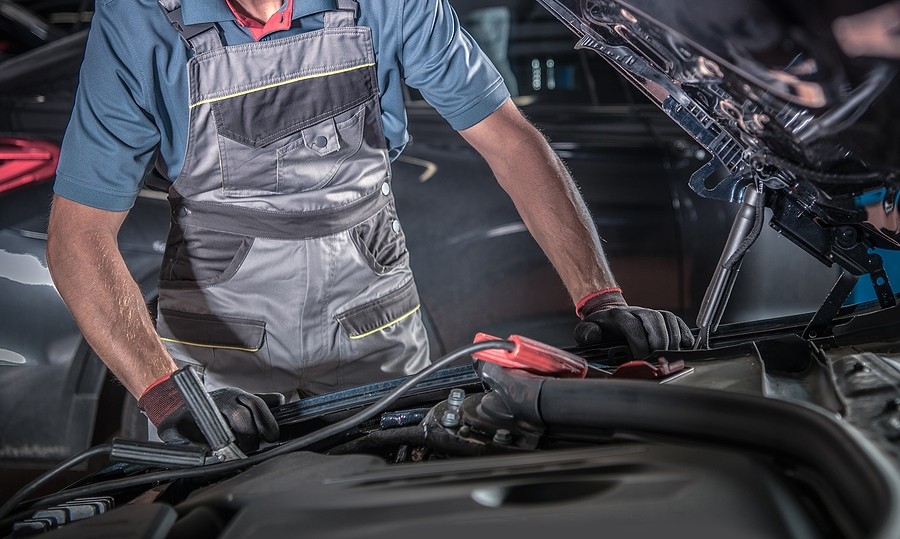If you're searching for “how to know if a car fuse is blown,” check for these signs:
- Malfunctioning electrical components
- Melted fuses
- Darkened fuses
- Physically damaged fuses
- Failing multimeter tests
The vehicle fuses are minor components but play a major role in protecting the electrical components. They prevent major sensitive electrical components from getting damaged by excessive current flow.
Like any other components in your vehicle, the fuses are expected to reach the end of their lifetime, and you'll see them damaged or blown out on many occasions. Unfortunately, when the fuse is blown up, it leads to several issues that might prevent the performance of your electrical system.
This article provides detailed guidance to help you diagnose and look for symptoms of damaged and blown-up fuses. It should help you answer the question, “How do you know if a car fuse is blown?” Finally, it provides recommendations about how to replace the blown fuse and prevent its damage in the future.
What is the car fuse, and why does it blow out?
Before we dive into the details about “how to know if a car fuse is blown,” it is essential for you as a car owner to understand the fuse in the first place and why it blows out frequently.
The car fuses are very minor components in any vehicle. Their main task is to protect sensitive electrical components from excessive electric current damage. They break the circuit rec, achieve any big current, and hand it back to the electrical component safely without damaging it paired
There are many reasons why you might deal with a blown-out fuse frequently inc, including the following:
- Too many electrical components working at the same time leading to overloading the electrical system
- Damaged wiring causing short circuits
- Problems with faulty electrical components that lead to drawing the wrong amount of current
- External factors like water damages that could impact the electrical system
Remember that these are just a short list of potential problems that could lead to fuse damages here. Many other ones could do that, and regardless of the root cause of the problem, when it happens, you need to address it as soon as possible.

How do we know if a car fuse is blown?
Since electric fuses play a significant role in making sure that components are working all the time, it is essential for you as a car owner to understand how to tell if you are dealing with a blown fuse yourself before you even reach the mechanic.
Typically, when your car fuse is blown up, you'll deal with the following symptoms:
1- Malfunctioning electrical components
Unsurprisingly, when the fuse is damaged, you'll immediately see that the electrical component connected to this particular fuse is not going to work. This is because it's not receiving the right electric supply, so nothing makes it function.
You won't know if the electric component is not working unless you use it. That's why, without needing to use this component, you might not tell at all. For example, if you're relying on certain electrical tools that you use only for certain seasons, you won't need them until the next season's comment comes and when you detect their blown fuse.
2- Melted fuses
If you don't want to wait a long time to determine whether you're dealing with a blown fuse, you can perform a quick visual inspection. When the fuse is blown, you'll immediately see that it's melted completely. This is obviously when it is facing significant issues that caused it to get damaged this much.
When you're performing this type of inspection, you don't want to touch them because there are a lot of risks of getting yourself electrical shocks or any other hazards that might impact your safety.
3- Darkened fuses
Even if the view is not melted completely, sometimes you might see it darkened. This might be a minor early sign indicating that the fuse is dealing with some issues you must address. Otherwise, it will blow up soon.
This is perfect timing for detecting these early problems because your mechanic might be able to address them before you deal with the completely blown fuse. You might not be able to continue driving your car with this fuse and need to replace it anyway. Still, it's a good thing to do before you deal with other complications that might impact the electric components.
4- Physically damaged fuses
When looking at the fuses, you might see some clear physical damage. This is another sign that you need to replace the fuse as soon as possible before it results in complicated issues that will cost you a lot of money, especially since the fuse cost is not very expensive when you need to replace it.
5- Failing multimeter tests
Finally, and if you have the right tools, you can do what's known as a multi-mirror test. You can connect the multimeter to your fuse and confirm it works properly. There is detailed guidance on how to do that by following some YouTube videos.

How to check for a blown fuse?
Now you have a general idea about the symptoms indicating A blown fuse; below is a step-by-step process that could help you check your views before contacting the mechanic. Let's take a closer look below:
- Step #1: Locate the fuse by checking your vehicle owner's manual
- Step #2: Identify the faulty electrical component to determine the connected fuse
- Step #3: Take out the fuse you're using a needle nose pillar and perform a closer inspection
- Step #4: Consider using a fuse tester to determine whether it's damaged or not quickly
Once you confirm that the fuse is completely blown out, the next step for you is to learn how to replace it if you plan to do it yourself without needing a professional to save on labor costs.

How to replace a blown fuse?
Since the fuse part itself is not very expensive, you'll see that going to a professional to perform the fuse replacement might cost you some money that you can avoid if you have the right skills to replace the fuse.
Replacing the fuse is not a complicated job; you can do it yourself without needing a professional unless you're concerned about causing additional damage to the starting components.
The list below provides you with a step-by-step process on how to replace your loan fuse:
- Step #1: Use the correct type of fees by referring to your vehicle owner's manual and comparing it to the old fuse
- Step #2: Remove the old fuse from its place using the proper tool
- Step #3: Insert the new fuse in the right location and confirm it's pushed properly
- Step #4: Reset the connected electrical component to this fuse and confirm it's working properly

How do we prevent future fuse issues?
After you have heard all the details about the blown fuse and its potential impact on your vehicle's performance, it is also essential for you as a car owner to try protecting your vehicle in the first place and preventing the fuse from blowing. Ups if you can do that to avoid dealing with future complications.
The following list provides you with some recognitions by automotive experts that could help you maintain your refuses and avoid their future damages prematurely:
- Keep up with regular maintenance and never underestimate what's required
- Monitor for any potential early symptoms of a blown fuse and address the problem as soon as possible
- Keep a continuous checkup for your car fuses to confirm that they're working all the time
- Replace the faulty fuse before it gets completely damaged
- Choose the proper type of use needed for your vehicle so you don't cause damage to the other components

How do we know if a car fuse is blown? Final Thoughts
Because of the extensive current flow, your car fuses are critical to ensure the electrical system works properly and avoid damaging the sensitive electrical components. These fuses are not designed to last forever, and there will be a point of time you have to place them.
If a car fuse is blown, it is critical to help you identify the faulty fuse and replace it before it leads to further complications that could cost you the entire electrical system.
Once you determine any of the mentioned symptoms in this article, you must replace the views as soon as possible and never underestimate the problem because it might impact the vehicle's performance and your safety.
If you're interested in similar posts, we highly encourage you to visit our blog by clicking here!



